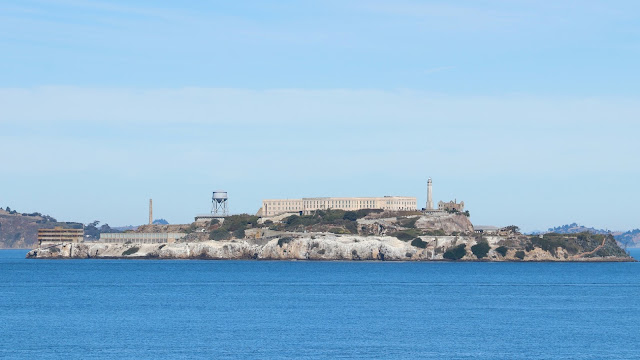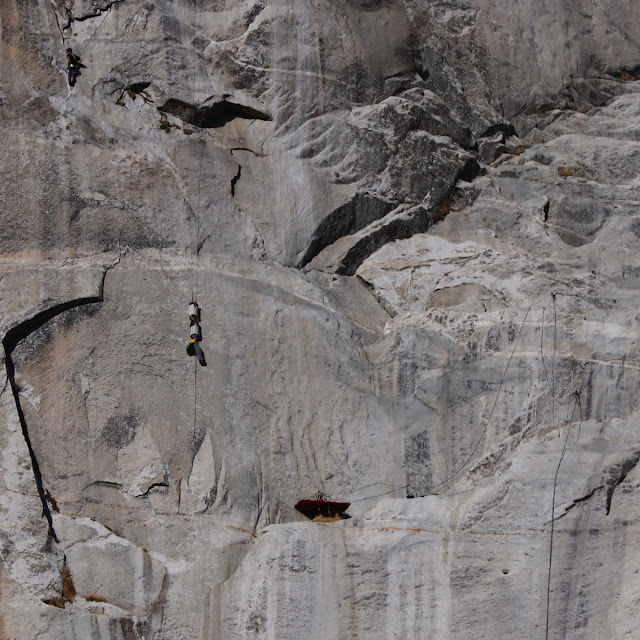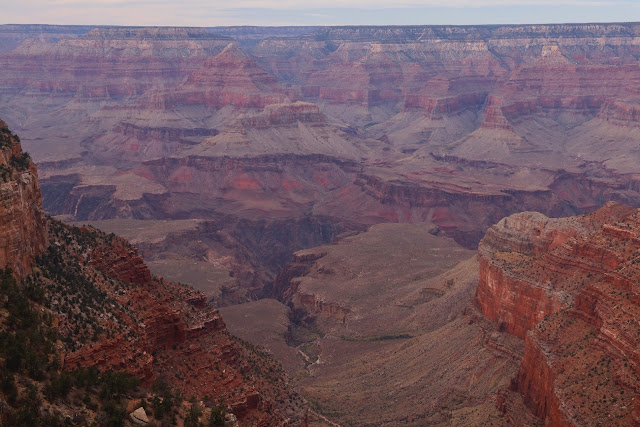Flying from Flagstaff to San Francisco via Phoenix saw us arriving at our hotel in Fishermans Wharf for nearly a week's stay.
One is spoilt for a choice of things to do and see when based here.
The cable car provided us with the first opportunity to explore San Francisco.
One is spoilt for a choice of things to do and see when based here.
The cable car provided us with the first opportunity to explore San Francisco.
 |
| Ready for departure to Market Street. |
Having purchased our day pass at an adjacent kiosk for 23USD we were promptly informed by the conductor that it is only 12USD from him!
Another day we hired e-bikes and set off over the bridge with a lunch stop at Sausilito in Marin County.
The bike shop told us that we would get 22 miles if we left it on power setting 2. By using the settings when needed we managed a 42 mile ride with over 50% of the battery power left.
After lunch we set off for Mill Valley to visit some giant redwood trees. It was a few miles uphill but the e-bikes came into their own.
Another day we hired e-bikes and set off over the bridge with a lunch stop at Sausilito in Marin County.
 |
| Fort Point |
The bike shop told us that we would get 22 miles if we left it on power setting 2. By using the settings when needed we managed a 42 mile ride with over 50% of the battery power left.
After lunch we set off for Mill Valley to visit some giant redwood trees. It was a few miles uphill but the e-bikes came into their own.
 |
| Mill Valley redwoods |
It was Saturday when we did the bike tour. (Thursday that week was when I went out to Yosemite NP blog). On the way down the valley both our phones received emergency warnings for possible bush fires in Marin County. The wind was expected to increase and that the power might have to be turned off for 2 million customers. More about the fires in October 2019 at the end of this blog.
Biking towards Tiburon for the ferry back to Pier 39 at Fishermans Wharf we were confronted by a steep incline. Using power setting 5, once the pedals were engaged we literally flew up the hill effortlessly.
A night time tour of Alcatraz (aka "The Rock") produced the opportunity to capture a nice sunset on the way over.
Biking towards Tiburon for the ferry back to Pier 39 at Fishermans Wharf we were confronted by a steep incline. Using power setting 5, once the pedals were engaged we literally flew up the hill effortlessly.
 |
| The Painted Ladies |
A night time tour of Alcatraz (aka "The Rock") produced the opportunity to capture a nice sunset on the way over.
 |
| Golden Gate bridge sunset |
 |
| Alcatraz |
 |
| Alcatraz near the jetty. |
New inmates to the prison were first given their prison clothes and other items.
 |
| Clothing issue store |
 |
| Towels and toiletries issued here. |
Next stop was the shower room.
 |
| No privacy in the shower room. |
 |
| One of the cell blocks |
Alcatraz had a maximum number of cells of over 300. The maximum number of inmates was around 280. It was for the most dangerous prisoners with one riot when a number of guards were shot with stolen weapons. The Battle of Alcatraz took place in May 1946. No executions took place here.
 |
| Al Capone's cell |
In June 1962 the only escape from Alcatraz occurred. Frank Morris and the Anglin brothers John and Clarence escaped through holes in the cell walls they had chiselled out and into service tunnels. Nothing more was ever heard from them, so did they make it or perish in the cold waters of San Francisco Bay? Various theories exist as to what happened them. Certainly the cold water and strong tidal currents meant that a swim to shore would be unlikely to be successful.
 |
| Escapee's cell |
One the attractions in San Francisco is the extensive maritime museum. I spent most of one day there in brilliant sunshine and clear skies.
Pride of place is the last remaining operational of 2,710 Liberty Ships built during WW2, the Jeremiah O'Brien.
 |
| Martime Museum |
Pride of place is the last remaining operational of 2,710 Liberty Ships built during WW2, the Jeremiah O'Brien.
 |
| Jeremiah O'Brien |
 |
| Alcatraz through the gunsight of a 20mm Oerlikon anti-aircraft gun on the Jeremiah O'Brien |
Sunday 27 October was our last day in San Francisco with breakfast at the sourdough bakery. Next a hop-on-hop off bus tour before heading to the airport for the long flight back to Melbourne then onto Wellington. Whilst at the airport we could see a huge bank of smoke spilling over the hills on the other side of the bay. The bush fires were starting to cause havoc in several parts of California by now. By Monday the whole bay area was choked with smoke. We were lucky to be blessed with fine clear skies and warm temperatures.
Yosemite blog.
Yosemite blog.















































